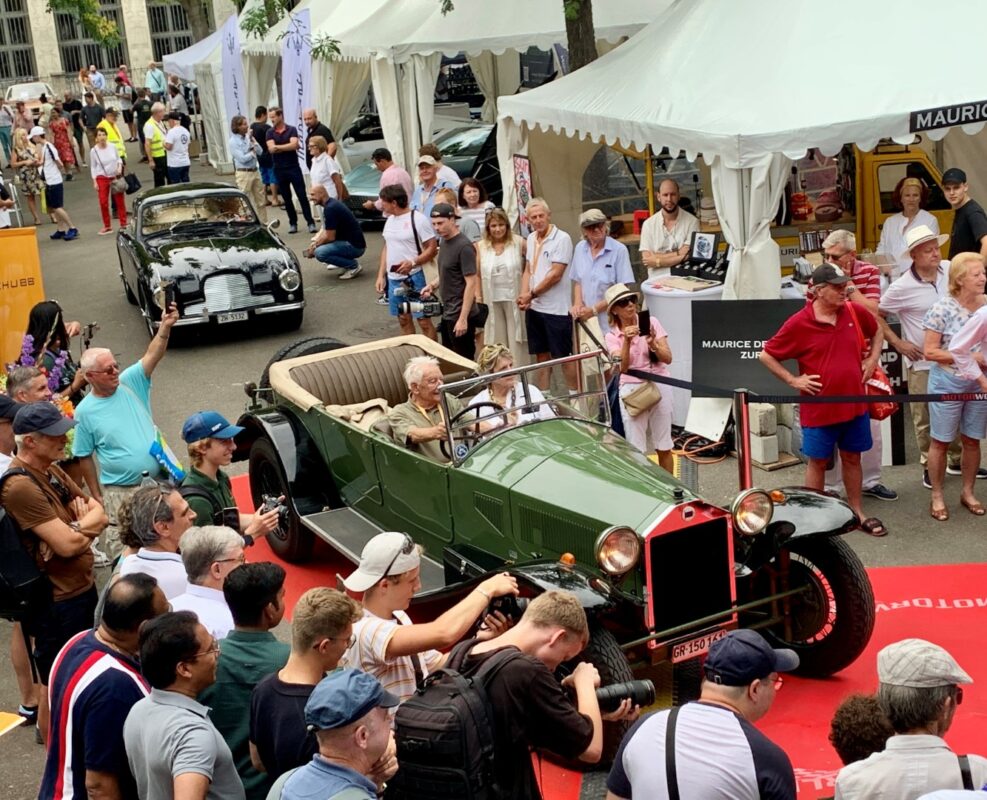Skoda: Postponed start at Le Mans
REMEMBER In 1950, Škoda Auto experienced a very special moment in the company's motorsport history: the only start of a Skoda model in the 24 Hours of Le Mans to date. After the Second World War, Škoda presented a new model series: the 1101/1102 "Tudor" relied on a 1089 cm3 four-cylinder engine and the car quickly became very [...]

After the Second World War, Škoda presented a new model series: the 1101/1102 "Tudor" relied on a 1089 cm3 four-cylinder and the car was quickly in great demand.
Robustly designed vehicles
The technically modern, robustly constructed vehicles proved their great reliability on numerous rally tracks and in endurance races on circuits.
In 1948, for example, they won all four categories in which Škoda vehicles competed in the 2649-kilometer Raid Polski. In the South American Montevideo - Melo - Montevideo rally, they took first and second place.

First places in endurance races
The "Tudor" models - the name is derived from the English word "Two Doors" - demonstrated their capabilities on the racetrack.
At the 24-hour race in Spa-Francorchamps, Belgium, the three four-seaters with closed bodies each covered 1972 kilometers and finished the endurance race in the top three places in their displacement class.
Lightweight aluminum body
For the 1949 season, the Czech automaker developed a special racing variant based on the "Tudor": the Škoda Sport.
The open two-seater had a wheelbase shortened by 400 millimeters and a particularly flat pontoon body made of lightweight aluminum and made its debut in Brno at the Czechoslovakian Grand Prix, but the real target was Le Mans.

Further developed version of the Sport
On Saturday, June 24, 1950, the factory team had done it: the further developed version of the 1101 Sport was ready at 4 p.m. sharp for the "Le Mans start", which was still customary at the time - lined up diagonally in front of the pit wall of the 13.65-kilometer "Circuit des 24 Heures".
Average speed of 126 km/h
The 600-kilogram Sport was driven by Václav Bobek and Jaroslav Netušil. The two Le Mans debutants gave it their all and, with an average speed of 126 km/h, soon took second place in the field of 60 competitors in the class up to 1100 cubic centimeters, which was filled with eleven vehicles.
After 13 hours, the number 44 car rolled out at dawn, a minor technical defect taking the Sport out of the race on its 115th lap: The retaining element of a connecting rod pin had snapped and it was no longer possible to repair it on site.
Postponed launch due to pandemic
The original Sport was restored and now belongs to a private collection. It should have taken to the track next first weekend in July to mark the 70th anniversary of its Le Mans debut and the 125th anniversary of Škoda Auto's foundation.
However, the Le Mans Classic - a biennial event since 2002 for historic race cars that competed in the endurance classic before 1979 - had to be postponed until 2021 due to the pandemic.









